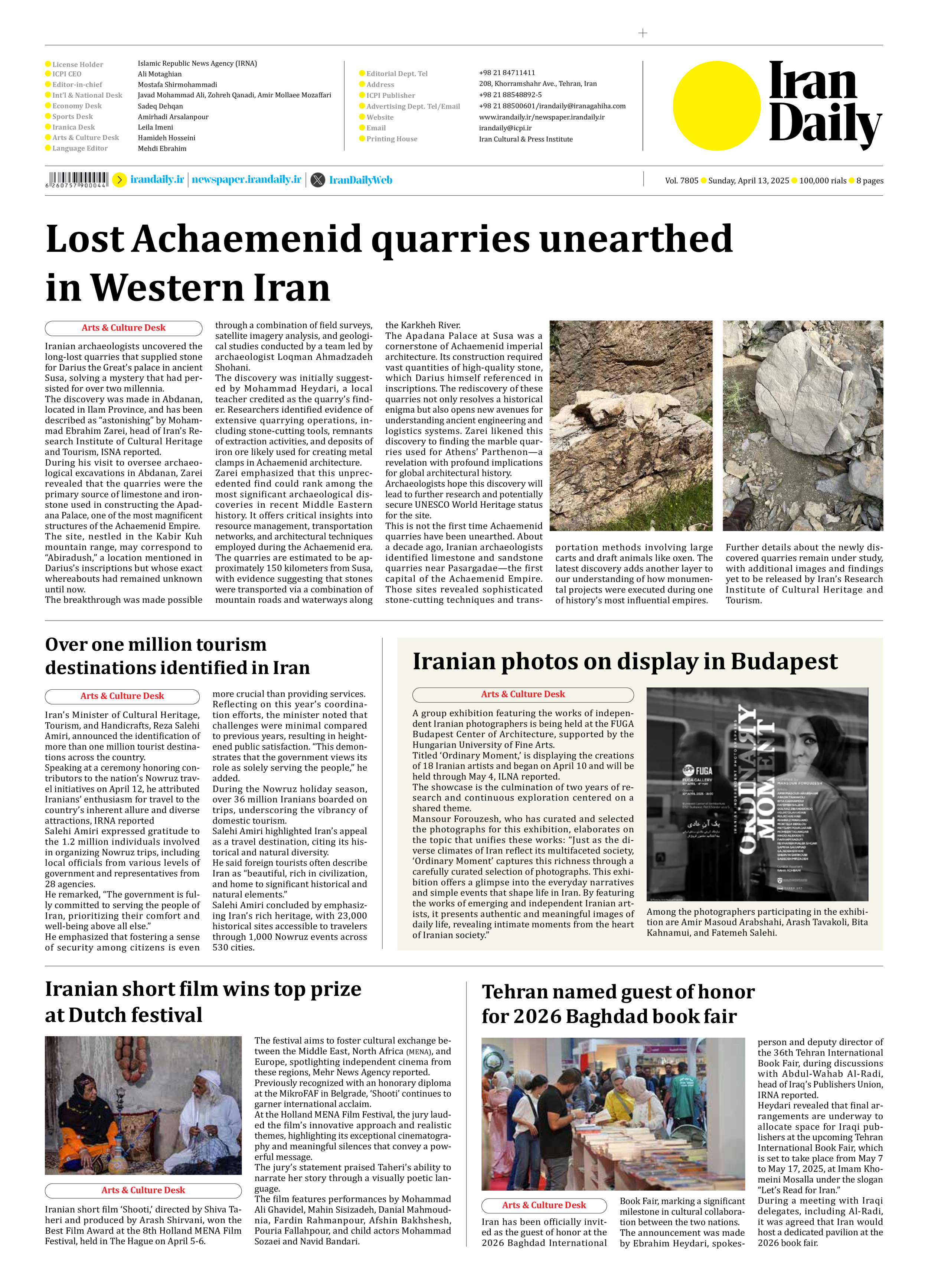
Lost Achaemenid quarries unearthed in Western Iran
Iranian archaeologists uncovered the long-lost quarries that supplied stone for Darius the Great’s palace in ancient Susa, solving a mystery that had persisted for over two millennia.
The discovery was made in Abdanan, located in Ilam Province, and has been described as “astonishing” by Mohammad Ebrahim Zarei, head of Iran’s Research Institute of Cultural Heritage and Tourism, ISNA reported.
During his visit to oversee archaeological excavations in Abdanan, Zarei revealed that the quarries were the primary source of limestone and ironstone used in constructing the Apadana Palace, one of the most magnificent structures of the Achaemenid Empire.
The site, nestled in the Kabir Kuh mountain range, may correspond to “Abiradush,” a location mentioned in Darius’s inscriptions but whose exact whereabouts had remained unknown until now.
The breakthrough was made possible through a combination of field surveys, satellite imagery analysis, and geological studies conducted by a team led by archaeologist Loqman Ahmadzadeh Shohani.
The discovery was initially suggested by Mohammad Heydari, a local teacher credited as the quarry’s finder. Researchers identified evidence of extensive quarrying operations, including stone-cutting tools, remnants of extraction activities, and deposits of iron ore likely used for creating metal clamps in Achaemenid architecture.
Zarei emphasized that this unprecedented find could rank among the most significant archaeological discoveries in recent Middle Eastern history. It offers critical insights into resource management, transportation networks, and architectural techniques employed during the Achaemenid era. The quarries are estimated to be approximately 150 kilometers from Susa, with evidence suggesting that stones were transported via a combination of mountain roads and waterways along the Karkheh River.
The Apadana Palace at Susa was a cornerstone of Achaemenid imperial architecture. Its construction required vast quantities of high-quality stone, which Darius himself referenced in inscriptions. The rediscovery of these quarries not only resolves a historical enigma but also opens new avenues for understanding ancient engineering and logistics systems. Zarei likened this discovery to finding the marble quarries used for Athens’ Parthenon—a revelation with profound implications for global architectural history.
Archaeologists hope this discovery will lead to further research and potentially secure UNESCO World Heritage status for the site.
This is not the first time Achaemenid quarries have been unearthed. About a decade ago, Iranian archaeologists identified limestone and sandstone quarries near Pasargadae—the first capital of the Achaemenid Empire. Those sites revealed sophisticated stone-cutting techniques and transportation methods involving large carts and draft animals like oxen. The latest discovery adds another layer to our understanding of how monumental projects were executed during one of history’s most influential empires.
Further details about the newly discovered quarries remain under study, with additional images and findings yet to be released by Iran’s Research Institute of Cultural Heritage and Tourism.







